#ermine moths
Text

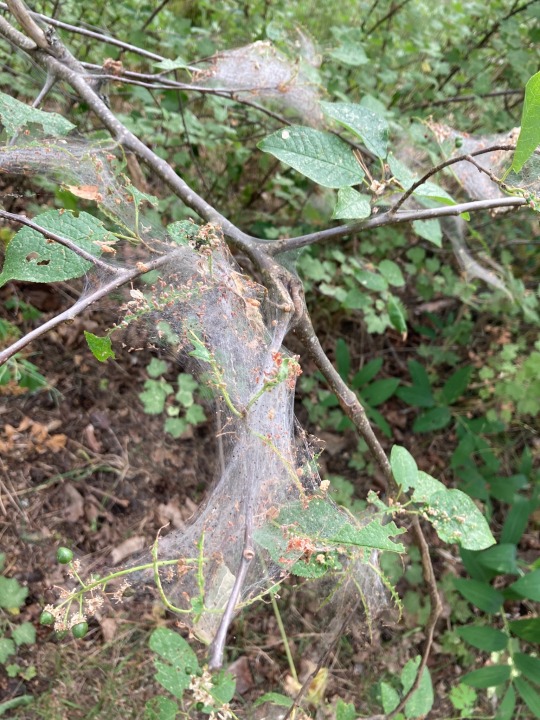


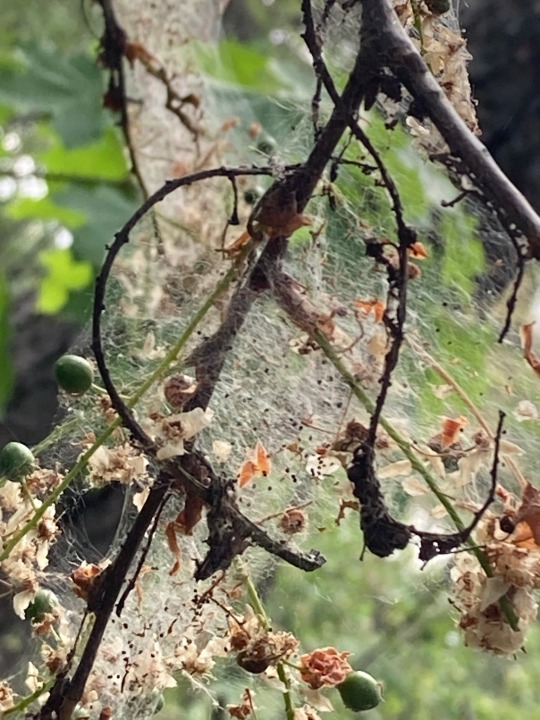
#ermine moths#tent caterpillars#yponomeuta#lepidoptera#insects#forest#trees#ultunaasen#uppsala#sweden
0 notes
Text
The Colorful Ailanthus Webworm Moth is a Great Pollinator
The Colorful Ailanthus Webworm Moth is a Great Pollinator discusses the lifestyle of this pretty little moth. It also explains why it has extended its range and shows readers images of the adults.
Ailantus Webworm Moth
The blackjack flowers that grow in my yard each year are excellent attractors for local pollinators. That’s the main reason that I let them grow. They produce a pretty white ray flower with bright yellow florets in the center, but by the time they flower they are definitely looking very weedy, so a lot of folks cut them down. Every year I find lots of butterflies, beetles,…

View On WordPress
#Ailanthus webworm moth#beautiful moths#colorful Florida moths#colorful moths#ermine moths#Florida moths#Florida pollinators#insect photographs#insect photography#insects#moth photographs#moth photography#moths#native moths#photography#pollinators#small moths#tropical moths#webworm moths
0 notes
Text
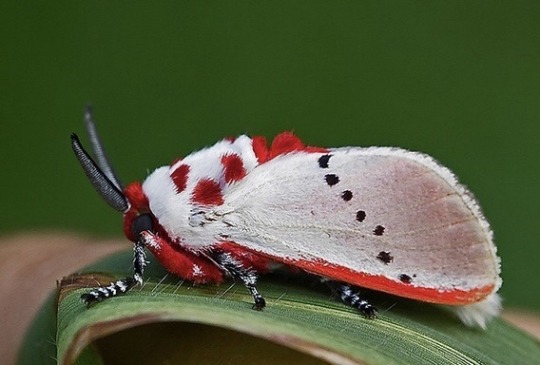
Rosy Ermine Moth aka Peppermint Moth (Trosia nigropunctigera), family Megalopygidae, found it in the cloud forests of northwestern South America
Photograph by Emir Filho
1K notes
·
View notes
Text
Moth Of The Day #252
Rosy Ermine Moth
Trosia nigropunctigera
From the megalopygidae family. They have a wingspan of about 34 mm. They mainly inhabit rainforests. They can be found in Costa Rica, Panama, Colombia, Venezuela, Guyana, Ecuador and Peru.


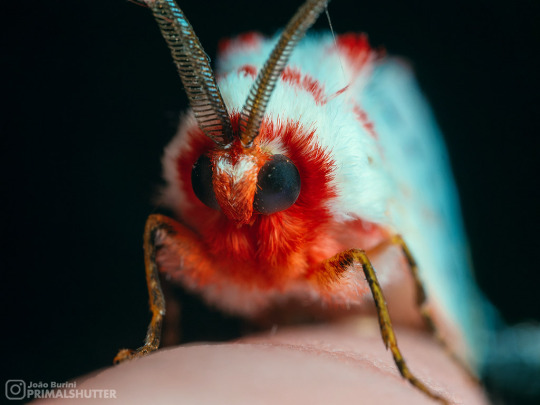
Image sources: [1] [2] [3]
#moth#moths#lepidopterology#lepidoptera#nature#pretty moth#bugs#insect#moth of the day#motd#lepidoptery#entomology#bug#insects#bugblr#beautiful moth#rosy ermine#rosy ermine moth#trosia nigropunctigera#megalopygidae#megalopygidae moth
651 notes
·
View notes
Text

The Entomologist's Text Book. Written and illustrated by John Obadiah Westwood. 1838.
Internet Archive
Leopard moth (Zeuzera pyrina)
Broad-bordered bee hawk-moth (Hemaris fuciformis)
Spurge hawk-moth (Hyles euphorbiae)
Pease blossom (Periphanes delphinii)
Magpie moth (Abraxas grossulariata)
Longhorn moth (Nemophora degeerella)
(Argyresthia brockeella) (no known common name)
#bugs#insects#moths#leopard moths#sphinx moths#broad-bordered bee hawk-moth#spurge hawk-moth#owlet moths#pease blossom#geometer moths#magpie moth#fairy longhorn moths#longhorn moth#ermine moth#John Obadiah Westwood
188 notes
·
View notes
Text
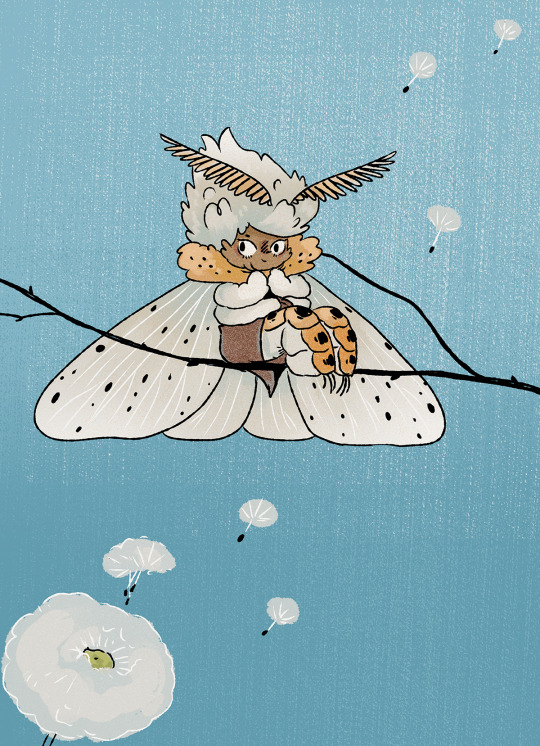
My mothtober drawings return! Catching up with day 7, the White Ermine Moth!
398 notes
·
View notes
Text



Oh hello 83 White ermine! Love that name
407 notes
·
View notes
Text
Moth of the Week
Bird-Cherry Ermine
Yponomeuta evonymella

Image source
The bird-cherry ermine is a part of the family Yponomeutidae, the ermine moths. It was first described in 1758 by Carl Linnaeus. It was originally placed in the genus Phalaena but was later transferred to the genus Yponomeuta, becoming Yponomeuta evonymella. This species’ common name comes from their main food plant: Bird Cherry.
Description This moth has a white thorax, head, and forewings. The forewings have five horizontal lines of small black dots, and a few black dots are also on the back of the thorax. The hindwings are shorter and wider than the forewings and are a beige/light brown color. Both the forewings and hindwings have a fringe on the end however, the forewings’ white fringe is short and only on the outer margin while the hindwings’ brown fringe is all over the hindwings’ edges besides the parts touching the forewings. Additionally the hindwings’ fringe is longer on the bottom of the wing. This moth’s thin and wiry antennae are two thirds the length of the forewing and are usually white.
Wingspan Range: 16 - 25 mm (≈0.63 - 0.98 in)
Diet and Habitat This species’ caterpillars mainly feeds on Bird Cherry (Prunus padus), but they also occasionally feed on cherry (Prunus) or buckthorn (Rhamnus). They are known to sometimes be pests of the bird-cheery because the caterpillars pupate and feed together in web like nests that can cover whole trees. This web keeps them protected and allows them to eat mostly unbothered by other insects and predators. The tree is still likely to survive after this, but may grow less in the following growth season/spring. Adults feed on nectar.
This species can be found in Europe and the northern and eastern parts of Asia. They live in many habitats such as river lowlands, deciduous forests, alluvial forests, stream banks with bushes and trees, gardens, parks, and more. Strangely according to Butterfly Conservation, this moth can be found “often far from the known foodplant.”
Mating This moth is seen in June to September and has only gerarion per year. Females let their eggs on the winter buds of their food plants.
Population sizes fluctuate, but it’s not uncommon for mass outbreaks of caterpillars to happen, which results in defoliated trees.
Predators This species is preyed on by parasitic wasps and seems to have few other predators.
Fun Fact This moth is attracted to light. Additionally when disturbed, this moth can skip away and falls to the ground. Note: this second fact does not currently have a citation on Wikipedia so it may be disproven in the future.
(Source: Wikipedia, Butterfly Conservation)
#libraryofmoths#animals#bugs#facts#insects#moth#lepidoptera#mothoftheweek#Yponomeuta evonymella#bird-cherry ermine#Yponomeuta
105 notes
·
View notes
Text
@jambrandwich submitted: No storytime this time! Just an update on the moth babies!
First of all, the tree has fully recovered from the spookification! Still silk, but now... leaves! To the right is when I checked on the babbies two weeks ago. All puppies.


But when I checked on them today: HOLY GOSH! Them moth babies be babies no more! Cruella coats everywhere!

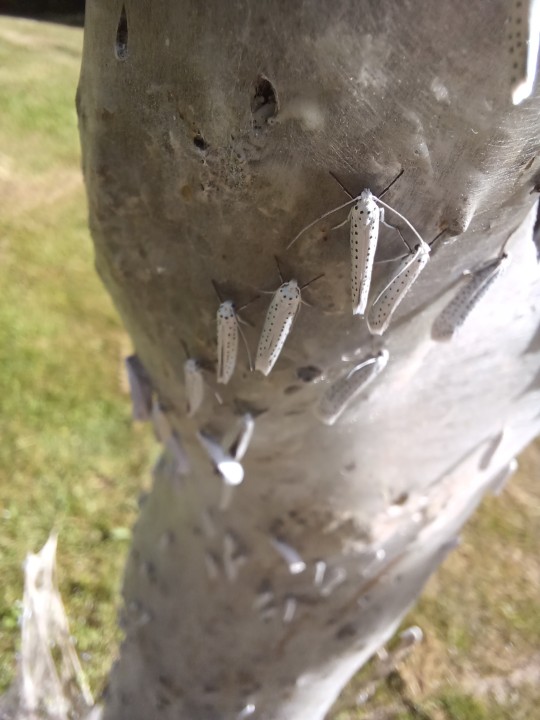

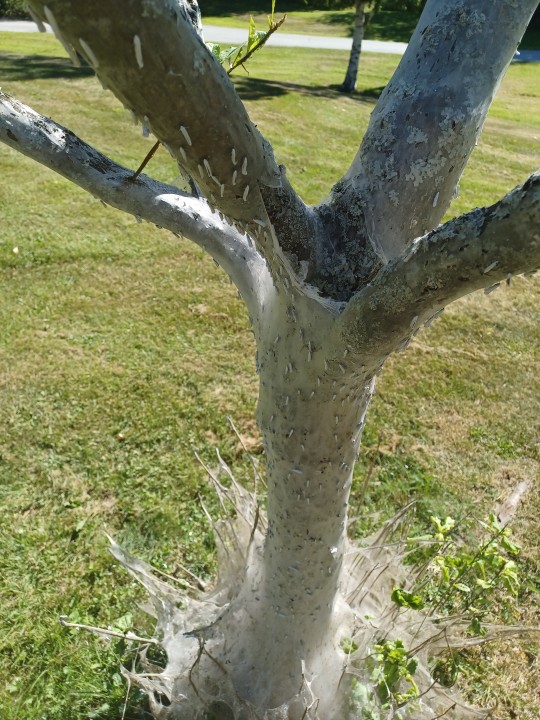
There's no overstating just how many moths there were! There were about as many in the grass below as were in the tree! And about twenty of them were on ME! Mad!
Also, did ya know... tiny feet crawling across your nose and eyebrow tickles A LOT!?

Culprit!
Ahhh the children are off to their adult lives! I'm so proud of them. Also glad the tree bounced back, they usually do. And little tiny moth feet DO tickle. Very cute. I wish them all very happy moth lives!
258 notes
·
View notes
Text
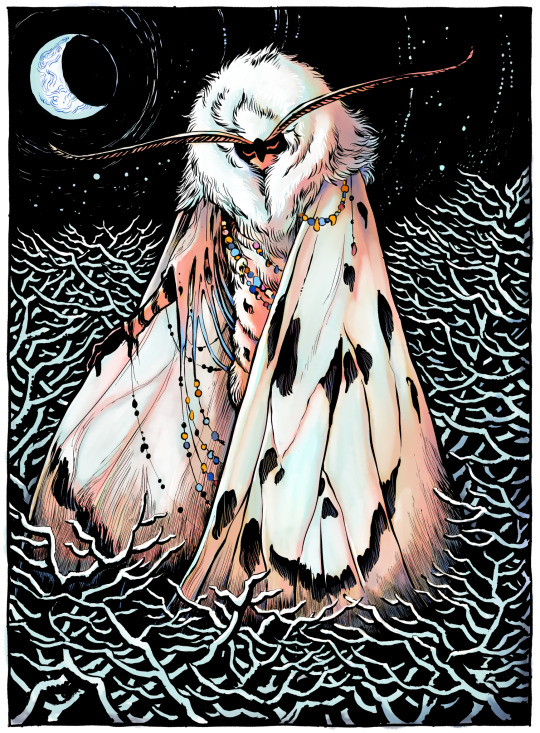

Happy Yule!
Another set of moths from the Mothtober prompt list by @thegorgonist ! Celebrating the turn of seasons with the White Ermine Moth and Scalloped Oak Moth.
Stay snug on the solstice!
#megamoth art#megamoth#illustration#mothtober#moths#scalloped oak moth#white ermine moth#moth#fantasy illustration
41 notes
·
View notes
Photo

A happy winter solstice and Yule to you, and the sugar scuttle full of weasels that I'm sure we all have.
359 notes
·
View notes
Text
Day 7 of #mothtober and @marimo-art ‘s Malevolent prompts!!
White Ermine Moth/The Lighthouse. I added fog in thin layers of gouache on top of everything else.
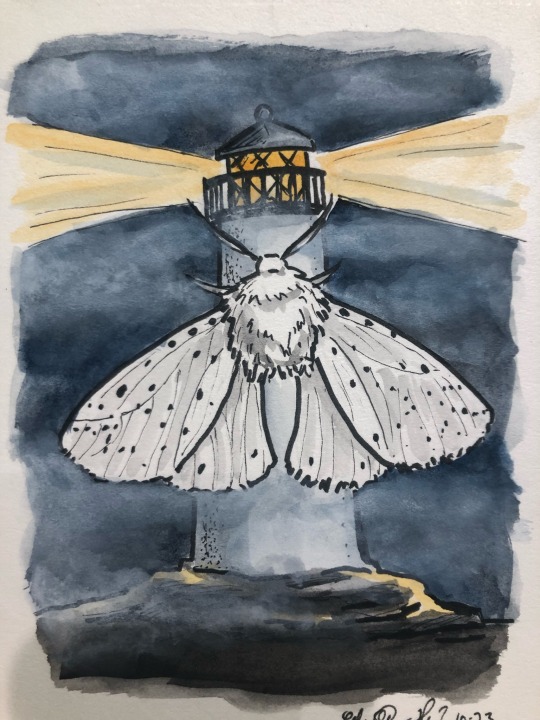
42 notes
·
View notes
Text

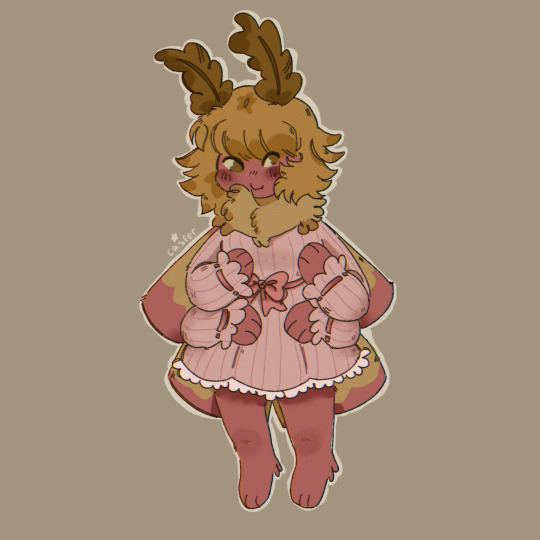
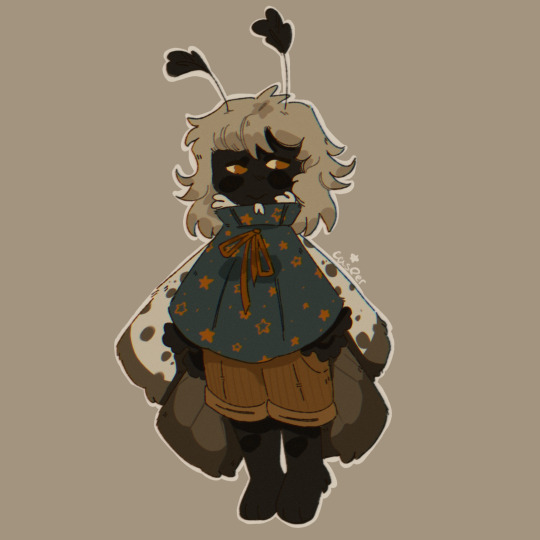
back on the critter grind, this time with moths eheheh super happy with these
#artists on tumblr#digital artist#art#oc artist#furry artist#illustration#original character#luna moth#lunar moth#rosy maple moth#ermine moth#moth character#moth creature#furry drawing#furry art#furry fanart#silly little guy#critters
37 notes
·
View notes
Text
Guess what!!!! The other two!!!

and AND(!!!) they have names!!! the moth (left) is named Critter, and the ant,,,,thing,,, (right) is named Kay :3
#hollow knight oc#hollow knight#hollowknight#hollow knight vessel oc#original character#digital art#Tbh Kay's design probably will change#same with critter's design#btw critter is based off of and ermine moth!!!!!
9 notes
·
View notes
Text
Moth Of The Day #139
Bird-cherry Ermine
Yponomeuta evonymella
From the yponomeutidae family. They have a wingspan of 16-25 mm. They occupy all sorts of habitats. They can be found all throughout Europe.
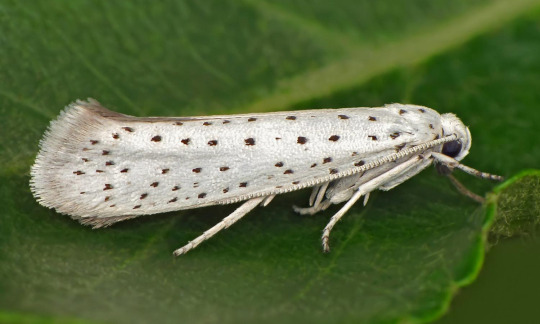

#moth#moths#lepidopterology#lepidoptera#pretty moth#nature#insect#bugs#moth of the day#motd#insects#bug#bugblr#lepidoptery#entomology#bird-cherry ermine#bird-cherry ermine moth#yponomeutidae#yponomeutidae moth
251 notes
·
View notes
Text

hazbin hotel redesigns
also i changed vaggie's name because c'mon... really?
#their color palettes anger me so much#PLEASE USE A DIFFERENT COLOR OTHER THAN RED I BEG OF YOU#anyways vaggie is a white ermine moth btw :3#and she is a scene kid from 2003#hazbin hotel#hazbin charlie#hazbin vaggie#redesign#hazbin hotel redesign#charlie hazbin hotel#vaggie hazbin hotel#art#artists on tumblr#digital art#digital illustration#illustrators on tumblr#character redesign#my art#doodles#dreamingeyes#this is just for fun vivziepop stans dont bash me thx
10 notes
·
View notes